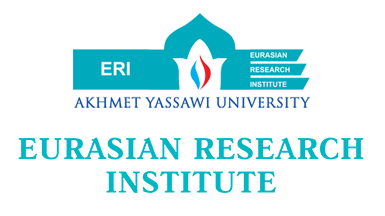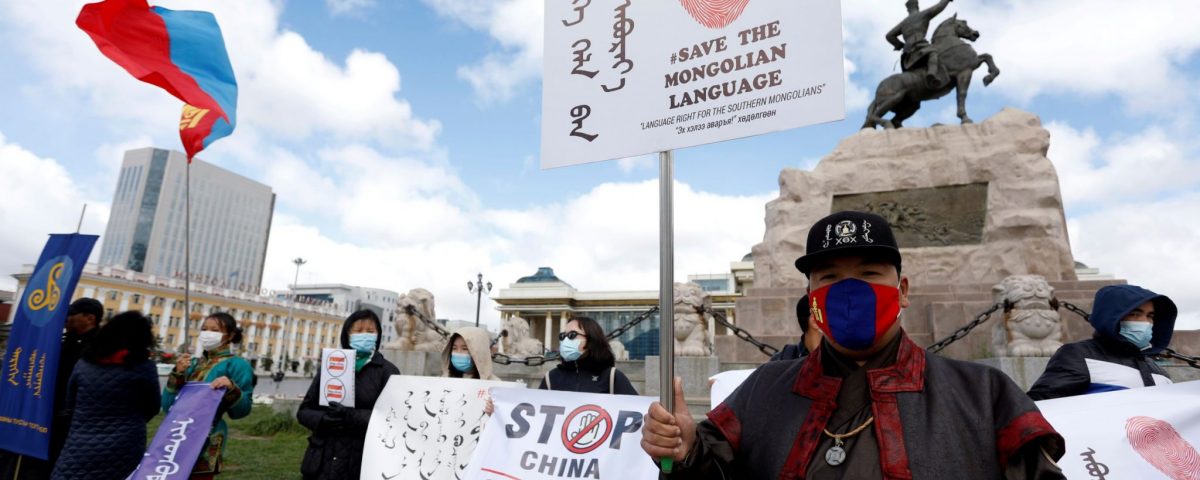Beginning on January 2, 2025, Mongolia will formally implement the use of both the Cyrillic and traditional Mongolian scripts in official documents at the state and local levels, following the Mongolian Language Law (Kazinform, 2025). The official decision to reintroduce Mongolia’s traditional script, known as Mongol bichig, was made in March 2020. The Mongolian government announced a national program to promote the use of the traditional script alongside the Cyrillic alphabet, aiming to implement both scripts in official documents by January 2025. While the Cyrillic script will continue to be used during the transition period, the objective is to fully restore the traditional script by 2030 (The Diplomat, 2024).
It should be pointed out that the decision to gradually reintroduce the traditional script was not an isolated or spontaneous act, but rather part of a long-term plan adopted a decade ago, in 2015 when the Mongolian Parliament developed and approved a roadmap for the revival of the bichig. Moreover, this decision marked the culmination of public discussions that had been ongoing since the early 1990s, following Mongolia’s democratic transition. At that time, one of the government’s priorities was the revival of national heritage and the restoration of national identity that had been altered by communism. The reintroduction of the traditional script was one of the essential components of this project. Hence, the fact that this initiative is part of a long-term project that has been in development for many years rules out the possibility that recent geopolitical events in Eurasia were the primary influence behind the decision.
On the other hand, the implementation of the project went on differently depending on which party held the majority in the Mongolian Parliament, who was serving as president, and other internal political dynamics. Perhaps the most active advocate for restoring the use of the traditional script was President Khaltmaagiin Battulga, who served from 2017 to 2021. Being a member of the Democratic Party of Mongolia, a right-leaning, centrist political party, President Battulga is widely recognized for his strong nationalist and populist stance. Although he has not explicitly identified as anti-communist, his political rhetoric and actions often reflect a critical view of Mongolia’s communist past and its legacy. In August 2017, shortly after assuming office, he issued a decree declaring September 1st as the “Day of the Mother Tongue,” emphasizing the importance of preserving the Mongolian language and script as essential elements of national identity. This move was part of a broader effort to revive cultural heritage and assert national sovereignty (President.mn, 2017). In May 2018, President Battulga issued another decree aimed at further promoting the traditional Mongolian script (President.mn, 2018). In general, the importance of preserving the national identity and the revival of the traditional Mongolian script has been an important part of his official rhetoric.
Historically, the Cyrillic script currently used in Mongolia is not the country’s original writing system. The traditional vertical script, which had been in use for over 800 years, was replaced in 1941 under Soviet influence, during Mongolia’s political alignment with the USSR. This shift has very clear parallels with developments in Central Asia during the same historical period, where Arabic scripts were first replaced by Latin alphabets for a brief time, before being abandoned in favor of Cyrillic under pressure from Moscow.
Also known as the classical Mongolian script, bichig is a vertical writing system traditionally used to write the Mongolian language. It is believed to have been invented in the early 13th century, adapted from the old Uyghur script. Written from top to bottom, with columns arranged left to right, the script consists of 26 basic letters representing consonants and vowels. It shares some structural similarities with the Arabic script. For instance, letters change shape depending on their position within a word. Although these features preserve the script’s authenticity and historical depth, they also bring challenges, especially when used alongside the Cyrillic alphabet. For example, digital systems often struggle with their vertical orientation and contextual character forms. Rendering the script typically requires special fonts and standard QWERTY keyboards do not support it well. The visual similarity between some vowels and consonants can confuse learners, and distinguishing certain sounds- such as, for example short versus long vowels- can be difficult. These challenges have made it difficult for bichig to be widely adopted in everyday modern life among Mongolians. Therefore, public opinion in Mongolia regarding the reintroduction of the traditional Mongolian script is nuanced, reflecting both cultural pride and practical concerns. For instance, in 2021, a nationwide survey targeting public servants was conducted to evaluate their readiness for the use of biching. Approximately 150,000 civil servants participated in the survey. The results indicated that 53.6% of respondents expressed readiness to adopt the traditional script in their official duties, while 46.4% voiced reservations (Intellinews.com, 2025). The survey also highlighted regional variations in readiness. For instance, Govi-Altai Province reported the highest level of preparedness, with 74.7% of its public servants indicating they were ready to use both scripts. Additionally, among the 200,000 public servants surveyed, 34.7% had begun learning the traditional script from the first grade (Montsame.mn, 2025).
The introduction of the use of biching also presents a generational divide. Younger Mongolians, educated primarily in Cyrillic, often lack fluency in bichig. For instance, it has been found that although many support the initiative for cultural preservation, practical challenges persist due to limited proficiency in the traditional script. To address these challenges, the Mongolian government has been active in implementing educational programs aimed at enhancing bichig literacy. Initiatives include formal and informal training sessions, public exhibitions, and the integration of the script into school curricula.
However, the technical difficulties and the limited practicality in the use of the Mongolian biching are overshadowed by its symbolic meaning and importance in preserving the national unity with ethnic Mongolians living in China. There are around 6.3 million Mongolians living in the Inner Mongolia Autonomous Region of China, which is almost twice the population of Mongolia. In Inner Mongolia (China), the traditional Mongolian script has remained in use, especially in education, official signage, and cultural expression. Despite being a minority in China, Mongolians of Inner Mongolia managed to preserve a significant ethnocultural autonomy. While bichig was suppressed in Mongolia under Soviet influence, it was preserved across the border in China. It should be noted that Mongolia has demonstrated a commitment to preserving and promoting Mongolian cultural identity, which extends to supporting ethnic Mongolians in China’s Inner Mongolia Autonomous Region. This support is particularly visible when it comes to language and script preservation. By reintroducing the script, Mongolia is reaffirming cultural continuity with the broader Mongol diaspora, including those in Inner Mongolia.
It can be said that generally, the introduction of traditional script is mostly seen positively by Mongolians. Although the practical side of it faces certain challenges in being used more actively, the promotion of biching certainly has an aesthetic dimension and great cultural and historical significance. Therefore, the traditional biching has been recognized by UNESCO. In 2013, UNESCO inscribed Mongolian calligraphy (bichig script) on its List of Intangible Cultural Heritage in Need of Urgent Safeguarding. This designation acknowledges the cultural significance of the script and highlights the necessity of preserving it amidst challenges such as declining usage and limited transmission to younger generations (UNESCO, 2013). The recognition by UNESCO has fomented various initiatives in Mongolia aimed at revitalizing the script. These efforts include educational programs, public exhibitions, and the integration of bichig into official documents and signage.
Despite some historical parallels, Mongolia’s efforts to revive its traditional script should not be equated with the language reforms and alphabet transitions undertaken, ongoing, or planned in other former Soviet republics. First and foremost, the objectives behind Mongolia’s promotion of its traditional script differ significantly from those pursued by post-Soviet states.
Rather than aiming for a complete transition to a new alphabet, Mongolia is adopting a dual-script policy, in which Mongol bichig is being reintroduced alongside Cyrillic. As previously mentioned, there are serious technical limitations that make it difficult for the traditional script to be fully integrated into modern written communication. Instead, its revival is largely symbolic, cultural, and historical, a means of reclaiming national identity and tradition, not replacing current functionality. Mongol bichig is used primarily in ceremonial, educational, and symbolic contexts such as public signage, national events, and heritage celebrations. This contrasts with the aims of many post-Soviet states, which prioritize practicality and global integration by adopting the Latin script. In those contexts, alphabet reform is often framed within a geopolitical narrative, serving as a tool for de-communization and distancing from the Soviet legacy. Mongolia, on the other hand, grounds its script revival on historical and cultural motivations, using the traditional script as a vehicle for restoring national identity. In this context, the script also functions as a symbol of pan-Mongolic unity, extending beyond state borders to include ethnic Mongolians living in China and elsewhere. Conversely, alphabet reforms in countries like Azerbaijan or those in Central Asia are primarily domestically focused and do not take into account diaspora communities in other nations.
However, there are also certain aspects that highlight commonalities between Mongolia’s efforts to promote its traditional script and the alphabet reforms undertaken by post-Soviet Turkic states. Despite their clearly different objectives, both Mongolia and these Turkic republics operate within a post-socialist transformation framework, using language policy as a means of redefining national identity and asserting linguistic sovereignty. Efforts to reshape writing systems in both contexts represent just one dimension of the broader societal shifts that tend to occur across post-communist countries. Alongside script reform, these transitions typically involve rewriting history textbooks, reviving pre-communist cultural symbols, and engaging in rituals of identity reconstruction, all aimed at reclaiming narratives that were once suppressed under communist rule.
References:
Intellinews.com (2025). Mongolia revives traditional “Ghengis Khan” script bichig. Retrieved from https://www.intellinews.com/mongolia-revives-traditional-ghengis-khan-script-bichig-361596/. Accessed on 12.04.2025.
Kazinform (2025). Mongolia officially adopts dual script for government documents. Retrieved from https://qazinform.com/news/mongolia-officially-adopts-dual-script-for-government-documents-f46fe2. Accessed on 06.04.2025.
Montsame.mn (2025). Mongolia reinstates Mongol script in public office. Retrieved from https://montsame.mn/en/read/358879?utm_. Accessed on 09.04.2025.
President.mn (2017). “Script of Eternal Sky – 2017” calligraphic exhibition opens. Retrieved from https://president.mn/en/2017/11/17/script-of-eternal-sky-2017-calligraphic-exhibition-opens/. Accessed on 09.04.2025.
President.mn (2018). Discussion held on the implementation of presidential decree on traditional Mongolian script. Retrieved from https://president.mn/en/2018/11/07/discussion-held-on-the-implementation-of-presidential-decree-on-traditional-mongolian-script/. Accessed on 09.04.2025.
The Diplomat (2024). The complex geopolitics of Mongolia’s language reform. Retrieved from https://thediplomat.com/2024/04/the-complex-geopolitics-of-mongolias-language-reform/. Accessed on 10.04.2025.
UNESCO (2013). Mongolian calligraphy. Retrieved from https://ich.unesco.org/en/USL/mongolian-calligraphy-00873. Accessed on 13.04.2025.
Note: The views expressed in this blog are the author’s own and do not necessarily reflect the Institute’s editorial policy.

